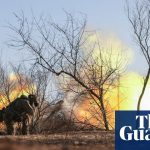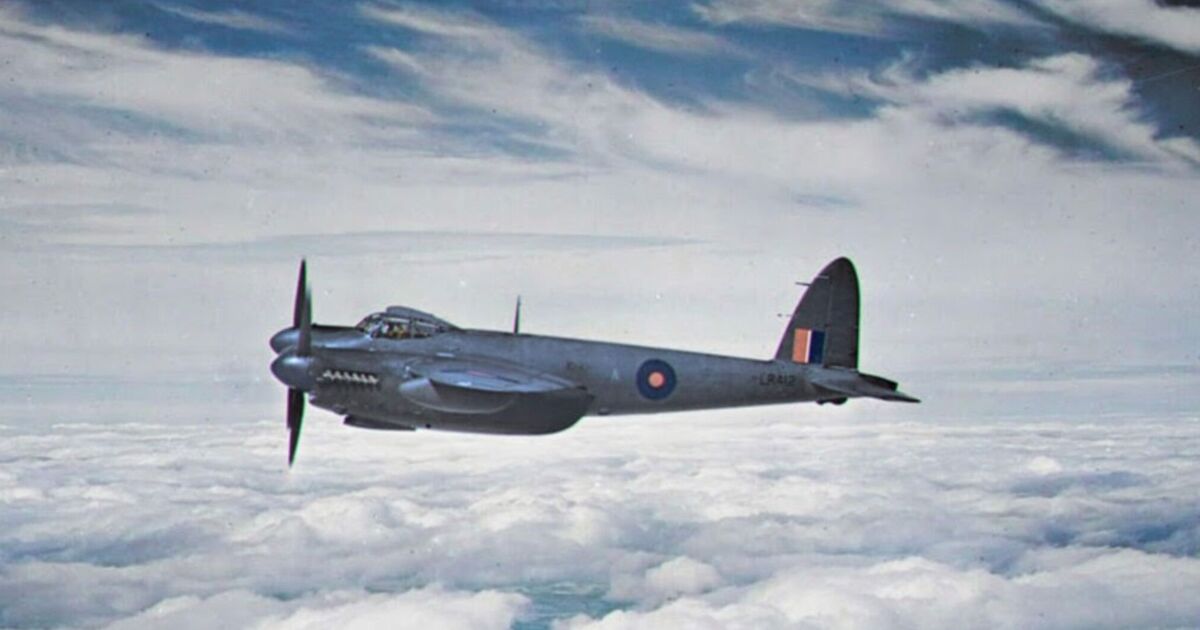A Rolls-Royce Merlin engine from a World War Two RAF Mosquito is being restored for a new memorial – after being recovered from the hill where it crashed.
Built of lightweight wood and powered by two Rolls-Royce Merlin engines, the de Havilland Mosquito was a versatile warplane which excelled as a spyplane.
One particular plane – Havilland Mosquito LR412 – flew 51 flights with 19 operational sorties all over occupied Europe including France, Germany, Italy, Norway, and Poland and was attacked by enemy fighters on five occasions.
One daring unarmed, reconnaissance raid it photographed the German Vemork heavy water plant in Norway, made famous in the 1965 Kirk Douglas and Richard Harris film – The Heroes of Telemark.
The aircraft crashed on Aran Fawddwy Mountain, Dolgellau, Merionethshire, Wales on Wednesday February 9, 1944 during daylight hours during a test flight from RAF Benson.
Now one of its engines are being restored using a state-of-the-art ‘dry-ice’ method to keep it preserved ready to be the centrepiece of a memorial – potentially unveiled later this year, in Whitehall, London – honouring the RAF’s Photo Reconnaissance Unit.
Tony Hoskins, Director Spitfire AA810 Restoration Ltd that is heading the campaign with the Mosquito engine, said of the original plane: “This wooden wonder was so called as its construction was largely of plywood and balsa, non-critical materials to the war effort and able to be mass constructed in carpenter and furniture shops around the UK.”
Mosquito LR412 was constructed in Hatfield and flew for the first time on the June 11, 1943 at the hands of factory test pilot John de Havilland.
Assigned to 540 Photographic Reconnaissance Squadron at RAF Benson, from logbook evidence LR412 flew a minimum of 51 flights which totalled 19 operational sorties, 14 of which were successful in completing the sortie objectives.
Being a pure reconnaissance aircraft, LR412 flew these unarmed operations all over occupied Europe including France, Germany, Italy, Norway, and Poland.
Attacked by enemy fighters on five occasions, and returning to the UK twice with one engine shut down, in November 1943 the aircraft was photographed over the German heavy water plant in Norway, made famous in the 1965 film The Heroes of Telemark.
The aircraft crashed on Aran Fawddwy Mountain, Dolgellau, Merionethshire, Wales on Wednesday February 9, 1944 during daylight hours whilst undertaking a test flight from RAF Benson.
There were no eyewitnesses to the crash. Search flights were carried out from RAF Benson on February 10, 1944 in an attempt to locate LR412, however these flights were not successful.
The wreckage was located by a local farmer during a routine check of his farmland. Two policemen located the remains of two bodies. A letter was found in a tunic pocket of one of the bodies.
Pilot Marek Slonski-Ostoja and navigator Paul Riches are buried together in St Mary’s Churchyard, Chessington.
The vast majority of the remains of the aircraft were recovered in the late 1970s – and up until last year the project, alongside the Ministry of Defence, negotiated the acquisition of the rest of the remains which included one of the engines.
The second engine remains near the crash site as a permanent local memorial to the crew.
Now more than 80 years since it last flew, the engine is being cleaned and treated at a base in Bicester, Oxfordshire, with thanks in part to the assistance of INEOS Automotive.
Scottish-based Eco Group’s dry-ice cleaning experts Steven McCreadie and Gordon Keen, travelled to the Classic Collective in Bicester, to clean the engine.
Steven said: “Obviously when you are dealing with a piece of equipment which is so historic and significant you want the result to turn out exactly as the restorers hoped for. Thankfully all went smoothly, and they were delighted with the outcome.”
The Spitfire AA810 project is campaigning for those that flew these highly clandestine spy operations commemorated for the first time on a National Photographic Reconnaissance Monument situated in Whitehall.
The team behind the monument wanted an impactful centrepiece for that monument and felt that incorporating the remaining wreckage of LR412 was a fitting way to recognise those crews lost flying these vital missions.
Tony said: “We’re so absolutely delighted at the results of the dry-ice blasting carried out by Steven and his team.
“The condition it brought the engine back to after sitting exposed to the elements for nearly 40 years, and then stored for another 40 years was beyond belief.”












